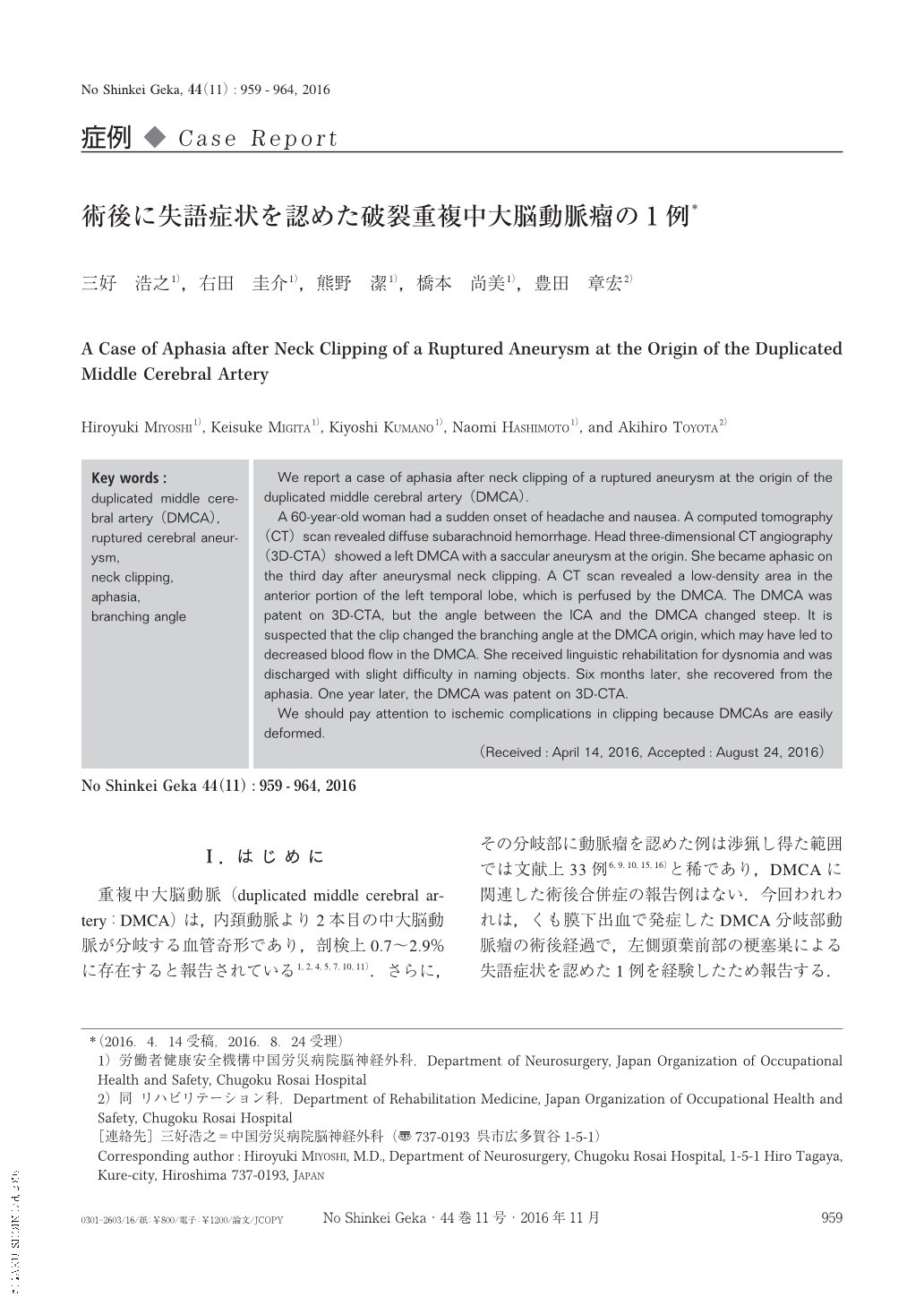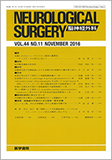Japanese
English
- 有料閲覧
- Abstract 文献概要
- 1ページ目 Look Inside
- 参考文献 Reference
Ⅰ.はじめに
重複中大脳動脈(duplicated middle cerebral artery:DMCA)は,内頚動脈より2本目の中大脳動脈が分岐する血管奇形であり,剖検上0.7〜2.9%に存在すると報告されている1,2,4,5,7,10,11).さらに,その分岐部に動脈瘤を認めた例は渉猟し得た範囲では文献上33例6,9,10,15,16)と稀であり,DMCAに関連した術後合併症の報告例はない.今回われわれは,くも膜下出血で発症したDMCA分岐部動脈瘤の術後経過で,左側頭葉前部の梗塞巣による失語症状を認めた1例を経験したため報告する.
We report a case of aphasia after neck clipping of a ruptured aneurysm at the origin of the duplicated middle cerebral artery(DMCA).
A 60-year-old woman had a sudden onset of headache and nausea. A computed tomography(CT)scan revealed diffuse subarachnoid hemorrhage. Head three-dimensional CT angiography(3D-CTA)showed a left DMCA with a saccular aneurysm at the origin. She became aphasic on the third day after aneurysmal neck clipping. A CT scan revealed a low-density area in the anterior portion of the left temporal lobe, which is perfused by the DMCA. The DMCA was patent on 3D-CTA, but the angle between the ICA and the DMCA changed steep. It is suspected that the clip changed the branching angle at the DMCA origin, which may have led to decreased blood flow in the DMCA. She received linguistic rehabilitation for dysnomia and was discharged with slight difficulty in naming objects. Six months later, she recovered from the aphasia. One year later, the DMCA was patent on 3D-CTA.
We should pay attention to ischemic complications in clipping because DMCAs are easily deformed.

Copyright © 2016, Igaku-Shoin Ltd. All rights reserved.


